Lace: what is, types and interesting facts

Probably, there is no such girl or woman who would not like delicate and airy lace. Even men who are completely unaware of fabrics invariably remain enchanted by young ladies in light lace outfits. Therefore, all types of lace are still actively bought and weaved.


What it is?
The lace itself is a mesh material with small or large patterns. It is often used to create both evening wear and lingerie. In addition, it can be found in the interior. For example, it can be pillows, tablecloths, tulle or other household items.

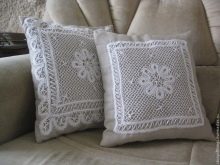
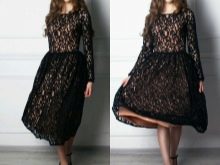
Advantages and disadvantages
Such material has a large number of positive qualities:
- quite attractive appearance that bewitches the look of any person;
- delicate and pleasant to the touch structure of the material;
- multifunctionality;
- elegance: even clothes, sewn in the usual way, can turn into festive;
- practicality: the composition of the material includes rather dense fibers that ensure the long existence of lace;
- environmental friendliness: when creating lace, only natural materials are used that do not cause allergies.



However, do not forget about some of the disadvantages of this material.
- It is necessary to take care of such fabric with great care. When ironing, be sure to use an iron set to a low temperature or set to the "silk" mode.
- Clothes made from such material must be worn with great care, as clues may appear that will lead to the destruction of the pattern.
- For many, the price of lace seems repulsive.Real fabric (especially handcrafted) is very expensive, even if it is a small napkin or tiny panties.
But it is quite obvious that this material has many more advantages than disadvantages. Therefore, lace fans are unlikely to stop wearing it.


Classification
As a rule, hearing the word "lace", a person imagines one type of exquisite fabric and does not even realize that there are actually several subspecies. Lace can be classified according to several principles.
By type of manufacture
According to the type of production, lace is divided into two types: machine and hand-made. The more expensive, of course, is the hand-made fabric. It takes several times more time to make it. And it looks much more beautiful: like a pattern painted by frost on the window. Such fabrics are always unique, and only with the help of bobbins and knitting needles you can create such an unusual material. The fabric, woven on special machines, is cheaper. It is made with a tight weave or a sparser one. Everything turns out much faster, therefore the price is significantly reduced.


By execution technique
Lace is also distinguished by the technique in which it was woven. When making this material at home, hostesses usually use knitting needles or a crochet hook. The fabric is thin and almost weightless.
Bobbin lace is even more popular. It is this fabric that is considered traditional. These are the same lace napkins that our grandmothers or great-grandmothers used to decorate all available surfaces in the house. In Russia, the skill of weaving bobbin lace dates back to the 13th century. But the craftswomen learned to create real masterpieces only in the 18th century. At that time, each part of our empire had its own traditions of weaving certain patterns and combinations of threads. Now, examining the work of the craftswomen of that time, one can see the characteristic features of the Vologda, Moscow, Ryazan lace.



Translated from Arabic, macrame means "lace". Initially, graceful patterns were created from numerous knots. It is now generally accepted that needlework has always been exclusively women's work. But the first wicker amulets were created by the calloused hands of sailors. During long voyages, they managed to create talismans not only for themselves, but also for their other halves. Now this technique is also very popular. After all, such lace is distinguished not only by originality, but also by its durability.
Hardanger, or needle lace, is created using threads and a needle. Such art is valued much higher. Indeed, it takes more time to create one pattern simply due to the fact that the same actions have to be repeated several times until the master achieves perfection. As a rule, only flowers are embroidered. The patterns are made with linen threads. Previously, this was done only because in Norway, where this art originated, there were problems with other materials. But there was enough flax at all times. Now such patterns are used to decorate household items: tablecloths, curtains, various cozy clothes.



White lace, made using the tatting technique, used to be trusted to create only by young girls. This is a kind of knotted lace, which looks many times more elegant than the amulets that sailors wove. The term itself means "negligence, looseness." The art of creating such patterns appeared in France, and in the East, fishing nets were woven in the same way. Nowadays lace is practically not created by hand using this technique. The work was entrusted to machines that cope with the assigned tasks much faster than people. In this way, various decorations are made.


Those who like silk linen and other products made from this noble material will also appreciate ribbon lace. It is also known as the Renaissance. The pattern is based on braid or ribbon. It is woven into the pattern and decorated with needle lace. It is much easier to create a large pattern this way.The use of special machines will help speed up the process even more.
The main enemy of such a thin material is washing. If it is wrong to wash products made of ribbon lace, then it will quickly lose its former attractiveness.


Lace, made in the form of a net, has a rather unusual name - fillet. The squares of which this fabric is composed can be either straight or oblique. The fabric is woven on shuttles. There are two varieties of the same material. A regular mesh is called a simple fillet, and a more refined mesh is called a guipure fillet.
Fans of exclusives like Irish lace most of all. This is one hundred percent exclusive work. Craftsmen knit not just a random geometric pattern. The canvas consists of plant motifs: various leaves, flowers. Several masters can work on its creation at the same time. The secrets of creating original patterns in this technique are passed down from generation to generation.


Equally elegant is Venetian lace, also known as guipure. The term translated from French means "graceful weaving" and perfectly conveys the essence of the whole process. Guipure is created using all the same bobbins or needles. Due to the fact that the weaving is light and free, the pattern is weightless. There is also an embossed guipure. From the beginning of the 17th century, the thin surface of lace was decorated with a relief seam along the edge of the ornament. In the center of such a canvas, they usually depicted some luxurious flower.
There is another type of Venetian lace - pico. This fabric differs only in that the flowers that adorn its surface are very small, and the seam along the edges is almost invisible. A simpler version of Venetian lace is classic guipure. Now elegant clothes are sewn from it. And to make it more comfortable, cotton and stretch are added to its composition. Due to this, the fabric is comfortable and elastic. And you can make such clothes brighter using lurex threads.


By instrument type
Most often, craftswomen at home use a regular crochet hook to create lace fabric. But hooks are also different. And the choice of tool also determines what the finished lace will be like in the end. A short crochet hook is used to create regular thin lace. The same tool should be used for those who want to learn how to create exquisite Venetian or Irish lace with their own hands. Long crochet knit Afghan or Victorian lace. But these techniques are already less popular.


In the conversation about lace, bobbins have already been mentioned more than once. These are special wooden sticks to which the threads are attached. Knitters create patterns by throwing sticks with dexterous movements of their hands. Another popular tool in this business is needles. Most craftswomen get by with only needles and threads. But there is another interesting way to create such fabrics: working with organza. The latter is the basis for the future pattern, on which only the contours of the future pattern are fixed. In fact, instead of this fabric, you can use any other, as long as it is thin.
And finally, the last tool that comes in handy for those who knit exquisite patterns at home is a fork. This, of course, is not about a cutlery. A crochet fork looks like a regular hairpin. Using it, you can translate into reality some unusual ideas. After all, it was created specifically for such complex patterns.
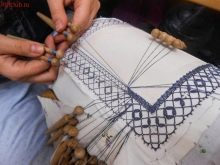


Usage
It is not enough just to sew lace, it still needs to be used correctly so that efforts are not wasted, and beautiful fabric does not gather dust in the closet for years. The finer fabrics (Irish or Venetian lace) tend to be expensive and are used for formal wear. It can be a branded blouse, a wedding dress, or a regular dress. Simpler and cheaper fabrics are used to decorate home textiles and create everyday textiles.
Rarely does anyone make an entire outfit out of lace alone. It's expensive for home textiles, but vulgar for outfits. Therefore, dresses, skirts, blouses are complemented by a lining of warm fabric. And when creating curtains, tablecloths and napkins, lace is used at all only at the finishing stage.


Subtleties of care
For whatever purpose lace is used, it should always look neat. To do this, you need not only to treat it with care, but also to adhere to the basic rules of caring for this elegant material.
- Ideally, you should only wash the lace with your hands. If there is no time for this or you just do not want to spoil a fresh manicure, then you need to set the most gentle mode on the washing machine.
- It is also undesirable to use washing powder: it is better to give preference to liquid products created specifically for the care of delicate fabrics.
- If the product is expensive and requires special care, then it is better to give it to a special cleaning. The same applies to other problems: only experienced craftsmen can remove puffs or repair damage.
- If the fabric is washed at home, then you need to be very careful when twisting it. Before proceeding to this process, a delicate thing should be wrapped in a terry towel.
- When drying lace, clothespins are not used. It must be dried flat so that it does not stretch out. And iron from the inside out and through cheesecloth.
If you follow all these rules, then your favorite lace dress or lingerie set will delight the eye for more than one year.

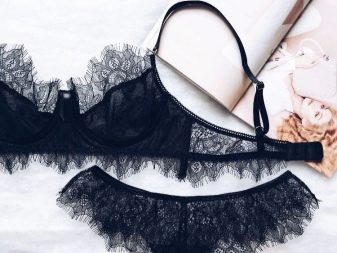
Interesting facts about lace fabric
Lace is a material with a rich history. There are many interesting things to tell about him. First, it is worth considering the word "lace" itself. Philologists say that it comes from the word "circle". Previously, all patterns were woven exclusively in a circle. That is, they were created according to the same principle as modern napkins.
Lace, unlike the art of weaving, has always been used precisely for self-expression. At first, only rich people wore clothes decorated with this material. Later, when life became easier, and the peasants could afford to embroider at least one weekend dress with such exquisite patterns. Although this is a painstaking laborious process, the young ladies often did it in the company of children. Needlework also seemed to be a very interesting occupation for future craftswomen.

When lace began to create not only outerwear and outfits for officers, the time came for luxurious lingerie. During the Renaissance, it was believed that lace is the material that makes a lady truly feminine. During this period, handicrafts began to be decorated with silver and gold threads. Due to this, the fabric looked even more expensive. In the 18th century, all wedding dresses of French and British queens were decorated with lace. The material was so durable and of high quality that some of the outfits, if desired, can be seen even now by visiting one of the exhibitions. For example, Queen Victoria's wedding dress with a luxurious silk train is exhibited at the Tower of London.
In addition, royal wedding dresses can be seen in numerous catalogs dedicated to the fashion of past eras. Modern designers are often inspired by them as well. This is not surprising, because for all the centuries of its existence, lace has never gone out of fashion.


And here's another interesting fact. As now, in ancient times in Russia everything foreign was in vogue. And although our craftswomen mastered the art of weaving lace no worse than noble French young ladies, fabrics created in France, Italy or Germany have always cost more. At the same time, according to historians, it was in Russian lace that Russian girls put more souls into. The process of creating a weightless fabric fascinated them no less than playing music: after all, bobbins rang when weaving. The sound depended on the type of wood and its age.An instrument made of young birch, for example, sounded thinner than the same bobbins made from old alder.
Now, both in our country and abroad, there are museums dedicated to lace. Some of the exhibits are created by local residents, other masterpieces are purchased and brought from other countries. There are frequent cases when one of the local residents donates old wedding dresses or light tablecloths embroidered by the hands of a great-grandmother to the museum. Most of the things in museums are really unique and created in a single copy.

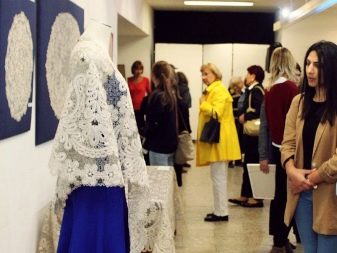
Many representatives of the older generations complain that this great art is now forgotten, but this is not so. Modern women of fashion, on the contrary, strive to learn how to create what others are incapable of. Therefore, the art of weaving fabric from thin translucent threads is being mastered with pleasure in all corners of the country. Anyone can learn this, and this is another pleasant fact. You should not immediately dream of sewing dresses in which the Austrian princess would gladly go to the promenade. Even the basic skill of using a short crochet hook and a knitting pin will be enough to make your wardrobe more sophisticated and feminine.
The history of lace goes deep into the middle of the last millennium. And although the inhabitants of the East were the first to create this fabric, it became more popular over time in European countries.
Modern lace, despite the fact that it is made with the addition of synthetics, still looks as luxurious as it did hundreds of years ago. The only difference is that now almost every woman can afford a couple of things in the wardrobe.


For information on how to weave lace, see the next video.








